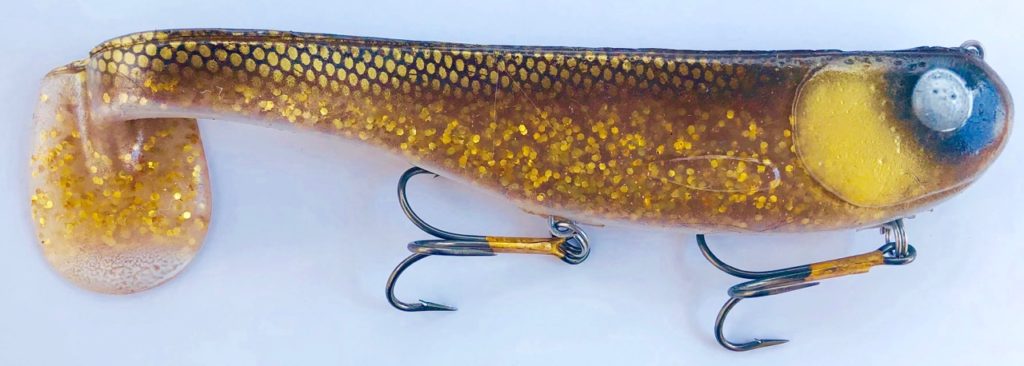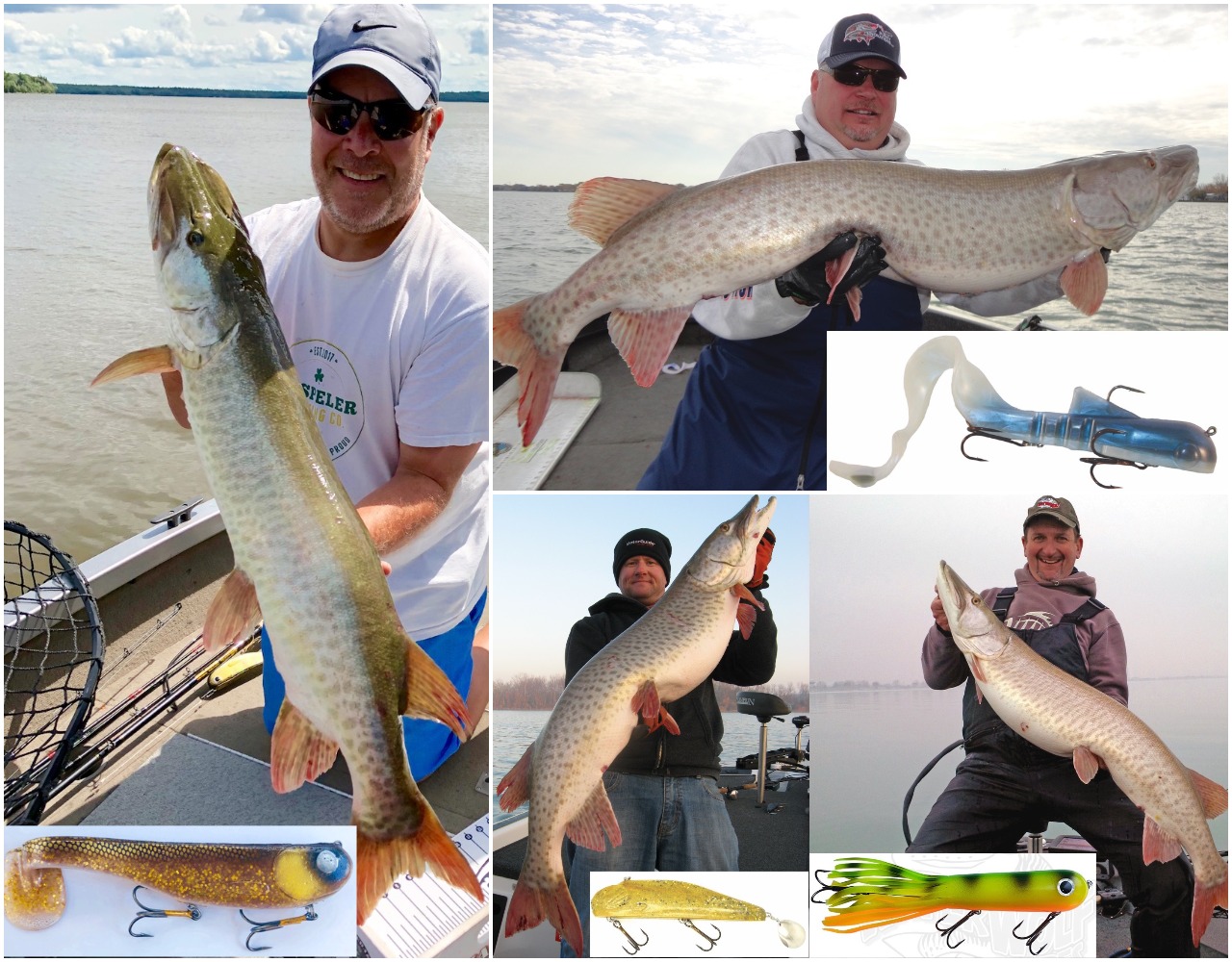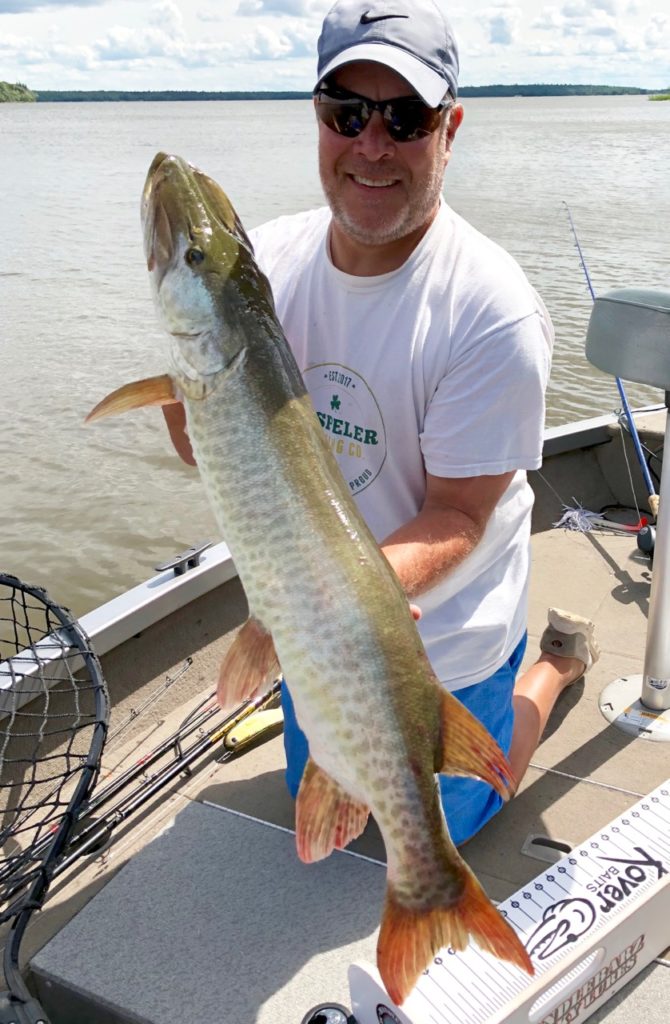Giant slayers
The makers of the top soft-plastics for muskies explain how best to fish them
Advertisement
ROVER BAITS
Okay, confession time: If I were forced to use just one soft-plastic lure style for all fish species, it would hands down be a swimbait. I’ve seen the power these things hold over all manner of fish as the body rocks from side to side, and the paddletail kicks back and forth. No other lure can perform this three-dimensional wizardry. It drives fish mad, but southern Ontario lure maker Landry Smith (above) has taken things to the next level with his muskie-sized Rover Baits.
Advertisement
Now, I will tell you straight up that I’m not comfortable sharing this—there are some things I still like to keep secret—but Rover swimbaits hunt for centre like no other swimbait I know. When you retrieve them briskly, they suddenly scoot off to one side, then quickly return to the centre of your retrieve before veering off in another direction. How they do that is out of your control, and that’s no accident.
“I wanted a solid body swimbait with an internal wire harness that had a great kick and wobble,” Smith says. “But most importantly, I wanted a paddletail that wandered, or fluttered, out to the side to trigger strikes, especially at the end of a long cast.”
Amazingly, Smith caught a muskie the very first time he tested his Rover prototype, but he didn’t stop there. He moved the line tie to achieve a more vertical swimming action, and thinned out the paddletail to produce an even bigger mule-like kick. While testing the modifications in a swimming pool, his heart skipped a beat as he watched the bait wander at high speed and kick out like wounded baitfish when he quickly cranked the reel handle.
Advertisement

“Swimbaits are the most versatile muskie baits,” Smith says. “You can fish them all year long, in all weather conditions, from super fast to super slow, and with a steady or erratic retrieve.” To work his baits, he uses an 8’ 6” to 9’ 6” extra-heavy-action rod paired with a medium-speed reel spooled with 100-pound braid and a 120-pound fluorocarbon leader.
“You can also count them down and fish them in deep water, or work them right under the surface,” Smith observes. “You can fish them around weeds, rock structures and over open water for suspended fish.” He says they really shine, however, in the late fall when large baitfish such as ciscoes, shad and whitefish group up.
Advertisement
If there’s one problem with paddletails, it’s that too many anglers simply chuck them out and reel them back to the boat, just letting them do their thing. That retrieve will work, but a much better game plan is to point your rod tip right at the bait while you constantly vary your retrieve. My favourite trick is to quickly turn the reel handle once or twice to make the lure hunt for centre, then let it settle back and maintain its forward momentum.
And what are Smith’s top picks from his stable of Rover Baits? For high-speed retrieves, he says the 9.5-inch Flutter Shad handles better than the 12-inch Mega Shad, although he likes the bigger bait in the fall when he wants to give the muskies a large-profile target.
BONUS TIP: BLADE RUNNER
Want in on a secret? Some stealthy anglers have been attaching Hawg Caller blades from Lubowski Lures to their Rover Baits, then trolling them at three- to five-miles-an-hour to catch some humongous muskies. It seems the wandering motion of the hunting-for-centre swimbait, combined with the thumping Colorado blade, is just too much for the giants to resist.


